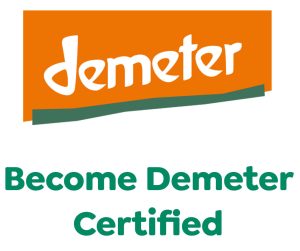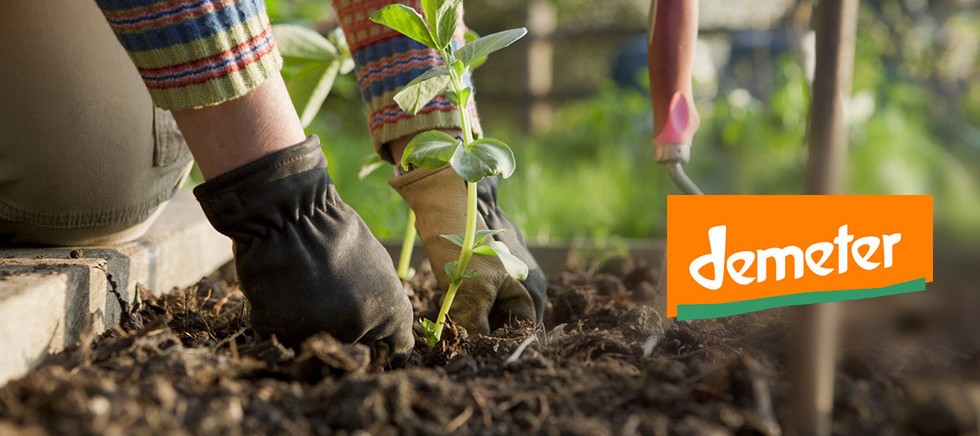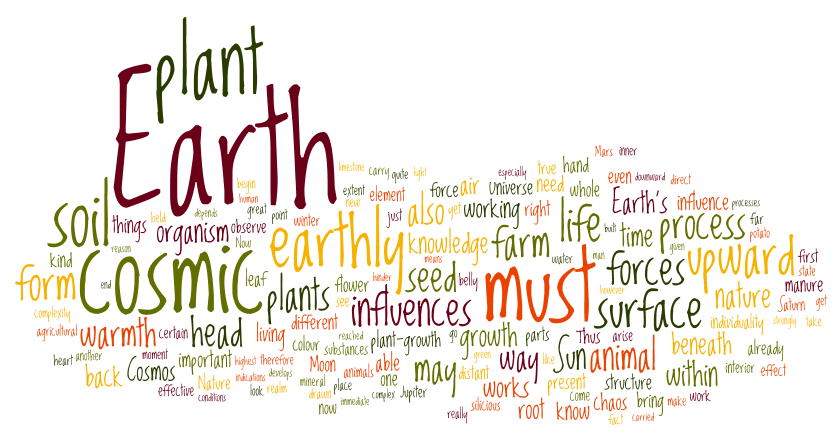What is Biodynamic & Demeter Certification?
 Discover the comprehensive world of biodynamic farming certification – beyond organic standards with holistic practices, cosmic calendars, and the rigorous Demeter certification process.
Discover the comprehensive world of biodynamic farming certification – beyond organic standards with holistic practices, cosmic calendars, and the rigorous Demeter certification process.
Biodynamic farming represents one of agriculture’s most holistic approaches, treating farms as unified living organisms and emphasizing ecological balance. While organic certification focuses primarily on prohibited substances, biodynamic certification demands a deeper commitment to regenerative practices, soil health, and cosmic rhythms that influence planting cycles.
As consumers increasingly seek foods produced with environmental stewardship in mind, understanding what makes biodynamic certification unique can help you make more informed choices about the products you purchase and the agricultural systems you support.
The Seven “Pillars” of a Demeter-Certified Farm are based on the best practice of biodynamic agriculture, according to the work of Rudolf Steiner.

They are:
Biological Diversity
A Demeter certified farm must have a minimum of 10% of its total effective land base‐ clearly documented in a calculated acreage figure‐ set aside as a biodiversity reserve. This preserves wildlife diversity, endangered species habitat, and provides an overall reserve of diverse life forms to inoculate and inhabit the farm organism.
Environmentally beneficial grazing and low impact wild harvest can take place but each situation will be handled on a case‐by‐case basis. In situations where there is no potential biodiversity reserve occurring naturally, areas will need to be created.…Other conservation areas of high ecological value must also be protected.
Tillable acreage cannot be planted only to a monoculture. Botanical species diversity needs to be maintained via the crop rotation strategies utilized. In annual crop rotations a given harvested commodity cannot be planted in the same field for more than two years in succession. Close attention needs to be paid to the nutrient export associated with each harvested commodity. The crop should not return to a given field until there has been adequate time to return exported nutrients to the soil in a manner consistent with these standards.
Bare tillage year round is prohibited. Land base needs to maintain adequate green cover. Soil must be protected from soil erosion and soil structure degradation during periods of the year when it is vulnerable. Adequate crop residue and, at a minimum, volunteer vegetative cover must protect any and all fields of cultivation during these periods (for example winter months, rainy seasons, etc.).
Generating fertility
The foundation of the fertility system needs to be based on strategies that emphasize generating fertility from within the life of the farm. When applicable, the following techniques need to be demonstrably utilized to their maximum potential in order for a farm to import allowed fertility materials. There are also limitations on the amount of fertility that can be imported and applied.
- Livestock integration
- Green manure
- Legumes/nutrient catch crops
- Biodynamic preparations
Crop rotation Disease, insect and weed control
The foundation of disease and insect control needs to be based on strategies that emphasize prevention located within the life of the farm itself. When applicable, the following techniques need to be demonstrably utilized to their maximum potential in order for a farm to import pest control materials.
- Botanical species diversity
- Predator habitat
- Balanced crop nutrition
- Attention to light penetration and airflow
- Biodynamic preparations
- Crop rotation
Timing of planting/Understanding of pest species life cycle
The foundation of weed control needs to be based on strategies that emphasize prevention located within the life of the farm itself. When applicable, the following techniques need to be demonstrably utilized to their maximum potential in order for a farm to import weed control materials (including petroleum to run tractors).
- Timing of planting/ Understanding of weed species life‐cycle
- Shade/crop canopy
- Mulching
- Crop rotation
- Identifying and avoiding the spread of invasive weed species
- Grazing
- Irrigation strategies
Use of the Biodynamic preparations
The full complement if the Biodynamic preparations 500‐ 507 must be used.
Water and waterway conservation
Irrigation needs are required to be met based on strategies that emphasize water conservation. The following water conservation measures need to be demonstrably utilized to their maximum potential.
- Development of soil organic matter
- Mulching, in instances where mulching can be practically applied
- Efficient irrigation delivery systems where such systems can be practically applied
- Alternative pumping methods, such as solar pumps, nose pumps or wind pumps are considered
- The performance of irrigation system equipment is routinely monitored to verify motors, pumps and delivery systems are performing well and according to specifications.
- Irrigation scheduling takes into consideration crop requirements, daily rainfall amounts, soil types and evapo-transpiration rates for the area.
- Soil moisture is monitored to improve irrigation efficiency in order to avoid excessive water application.
Livestock integration
The integration and maintenance of livestock is a valuable tool of Biodynamic farm management. Within the context of the farm individuality and ecology, the grower should strive to have a mixed livestock population to help establish and sustain a self‐sufficient system of fertility. In situations where the presence of only a small number of livestock is possible it is recommended that a cow be present in order to provide the manure for making Preparation 500 on the farm. Wherever possible the Demeter Association supports the principle of integrating livestock back into agronomic systems verses separating livestock from the land in large industrial feed lots. Their contribution to the fertility dynamics, crop rotation and vitality of a farm is significant.…It is recognized that many folks who sincerely want to integrate livestock into their farming system do not have the land base and other resources available to meet a Demeter standard for certified livestock products. For this reason, Demeter will allow exemptions not requiring livestock on Demeter farms to be certified to a Demeter standard. The land base on which the animals reside is NOT exempt from the requirements of Demeter standards. When imported animals are introduced to the farm care must be taken to ensure that they have not recently been treated with any prohibited materials to ensure that their manure does not contaminate the farm. Not having livestock on the farm and having livestock on the farm that are not managed fully to a Demeter standard requires approved exemptions.
Gentle post-harvest handling Agricultural production is minimally manipulated after it has been harvested.
How does biodynamic certification differ from organic certification?
Biodynamic certification has stricter requirements than organic certification. While organic prohibits synthetic pesticides and fertilizers, biodynamic requires all nine biodynamic preparations, integration of livestock, and operation as a self-contained ecosystem. Farms must dedicate at least 10% of land to biodiversity, follow cosmic calendars for planting, and achieve self-sufficiency through closed-loop systems where at least 50% of livestock feed comes from the farm itself.
What is Demeter certification?
Demeter certification is the highest standard in biodynamic agriculture, established in 1928. It requires maintaining biodiversity, applying all nine biodynamic preparations, and creating a self-sustaining ecosystem. The certification involves a structured three-year conversion process to ensure compliance with stringent standards. Demeter is globally recognized, though standards vary somewhat by region while maintaining core biodynamic principles.
What are the biodynamic preparations?
Biodynamic certification requires application of nine specific preparations exactly as prescribed. These include horn manure (BD 500), horn silica (BD 501), and seven compost preparations made from various herbs, minerals, and animal materials. These fermented substances are applied in small doses to enhance soil vitality and plant health. Certified farms must document their application, with inspectors verifying quality, timing, and storage during assessments.

The Certification Process: Steps to Achieve Biodynamic Status
Documentation and Record-Keeping Requirements
Thorough documentation forms the backbone of your biodynamic certification journey. You’ll need to maintain detailed records of all farm activities, including preparation applications, planting dates, and harvest times. Farm maps documenting field rotations, biodiversity areas, and buffer zones are mandatory. Track your compost production, seed sources, and animal integration with dated entries. Demeter certification requires at least three years of these records, showing consistent implementation of biodynamic principles across all seasons and operations.
Inspection Procedures and Timeline Expectations
The biodynamic inspection process typically spans 12-18 months from application to certification. You’ll first complete a pre-inspection self-assessment questionnaire detailing your current practices. A trained inspector will conduct an on-site visit during the growing season, examining your preparations storage, compost facilities, and field conditions. They’ll verify your astronomical calendar implementation and interview farm workers about practices. Follow-up inspections occur annually, with inspectors focusing on different aspects of your operation each year to ensure comprehensive compliance with biodynamic standards.
Economic Considerations of Biodynamic Certification
Cost Analysis: Investment vs. Market Premium
Biodynamic certification requires significant upfront investment beyond organic certification costs. Farmers typically spend $1,500-$3,000 annually on certification fees, plus additional expenses for specialized biodynamic preparations and equipment. However, certified biodynamic products command 25-40% price premiums over conventional goods and 10-20% over organic equivalents. Market analysis shows faster sales velocity for biodynamic items, with retailers reporting 22% higher profit margins compared to conventional products in the same category.
Financial Support and Resources for Transitioning Farmers
Several programs exist to offset biodynamic transition costs. The USDA’s Environmental Quality Incentives Program covers up to 75% of conservation practice expenses during conversion. Biodynamic associations offer transition grants ranging from $5,000-$15,000 for qualified farms. Private foundations like RSF Social Finance provide low-interest loans specifically for biodynamic operations. Additionally, farmer-to-farmer mentorship networks connect experienced practitioners with transitioning farmers, providing valuable technical support that reduces costly trial-and-error during implementation.
Challenges and Criticisms of Biodynamic Certification
Scientific Scrutiny of Biodynamic Methods
Biodynamic farming faces significant scientific criticism within agricultural research communities. The cosmic and spiritual foundations of biodynamic practices lack peer-reviewed evidence supporting their efficacy compared to conventional organic methods. Studies from agricultural universities have consistently failed to demonstrate that lunar planting calendars improve crop yields. Additionally, critics point out that the nine biodynamic preparations contain extremely diluted active ingredients, making their measurable impact questionable under scientific testing conditions. This evidence gap creates credibility challenges for certification bodies promoting biodynamic standards.
Accessibility Issues for Small-Scale Farmers
The complex requirements for biodynamic certification often create barriers for smaller operations. Annual certification fees ranging from $1,500-$3,000 represent a disproportionate financial burden for small farms with limited revenue streams. The mandatory integration of livestock poses significant challenges for crop-focused producers with space limitations. Furthermore, the detailed record-keeping requirements demand approximately 5-7 hours weekly—time many small-scale farmers simply cannot spare. These barriers effectively exclude many dedicated sustainable farmers from achieving biodynamic certification despite their commitment to ecological farming principles.
The Future of Biodynamic Certification in Sustainable Agriculture
Biodynamic certification stands at the intersection of ancient wisdom and modern sustainability needs. As consumers become increasingly concerned with food origins your understanding of these rigorous standards empowers better purchasing decisions.
While the certification journey requires significant investment of time resources and adherence to cosmic principles the market rewards these efforts with premium pricing and loyal customers. Biodynamic farming transcends typical organic practices by creating truly regenerative agricultural systems.
Despite scientific debates about some of its methods biodynamic certification continues gaining momentum worldwide with adaptations reflecting regional agricultural challenges. The growing recognition of Demeter’s label particularly in the wine industry signals a promising future for this holistic approach.
For farmers committed to the highest ecological standards biodynamic certification offers both a framework for land stewardship and a meaningful connection to conscious consumers seeking truly sustainable food systems.
How does the biodynamic certification process work?
The certification process typically spans 12-18 months, beginning with a self-assessment questionnaire followed by an on-site inspection. Farmers must maintain detailed records of all activities, including preparation applications, planting dates according to astronomical calendars, and harvest times. Annual follow-up inspections ensure ongoing compliance, with different operational aspects evaluated each year.
What are the costs and benefits of biodynamic certification?
Biodynamic certification requires an upfront investment of $1,500-$3,000 annually for certification fees, plus costs for specialized preparations and equipment. However, certified products command price premiums of 25-40% over conventional goods and 10-20% over organic equivalents, with higher profit margins. Support programs include USDA grants covering up to 75% of conservation expenses, transition grants, low-interest loans, and farmer-to-farmer mentorship networks.
What criticisms does biodynamic certification face?
Critics argue that biodynamic practices’ cosmic and spiritual foundations lack peer-reviewed evidence supporting their efficacy compared to conventional organic methods. Studies show lunar planting calendars don’t significantly improve yields, and the diluted ingredients in biodynamic preparations raise questions about their measurable impact. Additionally, the complex requirements and costs create accessibility barriers for small-scale farmers despite their commitment to sustainable practices.
How are biodynamic products recognized in the marketplace?
Biodynamic products typically cost 20-30% more than conventional and 10-15% above organic equivalents. Market research shows 73% of health-conscious consumers recognize the Demeter label in Europe, compared to 42% in North America. Wine represents the strongest biodynamic market segment with significant growth. Specialty retailers report that biodynamic products consistently outperform organic counterparts in repeat purchase rates despite higher prices.
Source: https://www.farmstandapp.com/20487/exploring-biodynamic-farming-certifications/
(Adapted from the Demeter-USA National Organic Program (NOP) Farm Standard)

